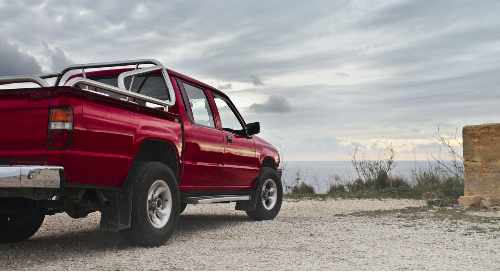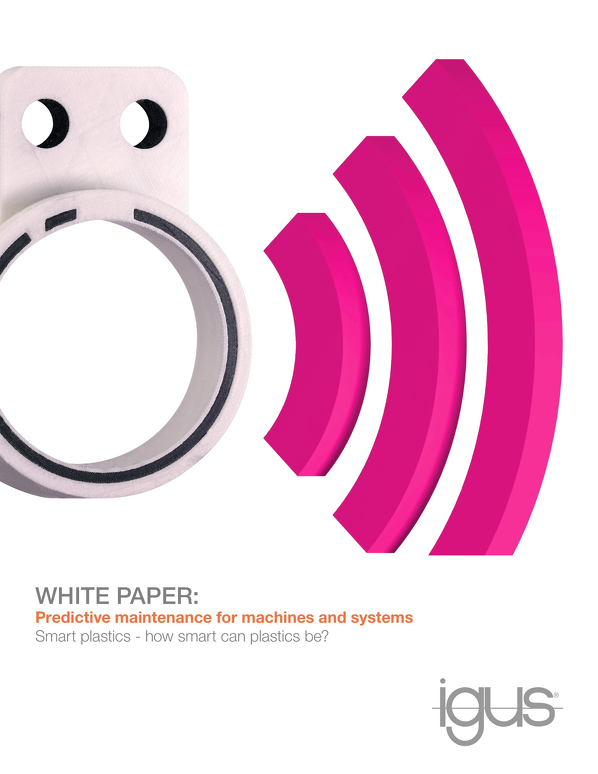A slide-in camper that slides out instead of popping up for 25% more space

More living space is always a plus
Highly compact while traveling, very spacious at the campground: this highlights the main characteristic of the Zoom slide-in camper prototype, which was designed and built by Ross Design GmbH. Its slide out sleeper can be extended by approximately 4 feet for a total of 17 feet, but this RV also features many other interesting innovations including new kitchen and door technologies.
A slide-in camper that grows from 13 feet to 17 feet long
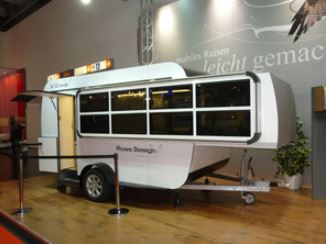
The Zoom camper concept was initially conceived by Martin Ross in CAD and then put into practice. While on the road, the Zoom is only 13 feet in length, making this camper truly a compact RV. After arriving at the campground, the camper uses an electric motor to conveniently extend the entire sleeping quarters beyond the trailer hitch. It therefore not only gains approximately 4 feet in usable length, but also an extension with a large double bed that does not interfere with the seating arrangement or the kitchen.
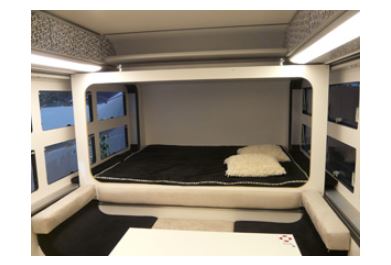
Designing a solution like this not only calls for an innovative idea, but also for the ability to implement it down to the last detail. The designer also needs to know which suppliers can provide the necessary components. Ross Design had the ingenuity and know-how to design the load-bearing structure, the installations, and the entire RV interior. Ross Design is part of Vöhringer Group, who are among the leading suppliers of RV and camper interiors in Europe. This group specializes in activities that involve a variety of value-adding processes on wood and polyurethane (PU).
Lead screw units and guides made by igus®
The majority of components on the Zoom are made in-house but the drive and guide system for extending the slide-out are sourced from external suppliers. When it came to the linear systems, Ross looked to igus® drylin® linear systems and chose a three-point drive. Martin Ross: "The drive is centered under the extendable unit; two aluminum profiles installed above the slide-out are used as the guide. This prevents misalignments. “
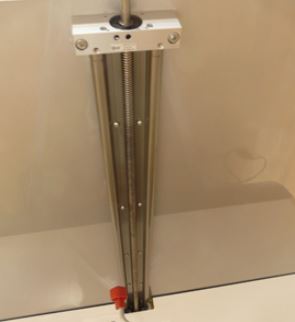
A drylin® SLW lead screw module is used as the central drive. These linear axis with trapezoidal threads (also available with high helix threads and toothed belts) do not need lubrication because solid lubricants are incorporated into the gliding and guide elements, which are made from iglide® J materials. Together with the hard anodized aluminum shaft, these elements make an outstanding glide pairing.
Easy integration into the surrounding structure
The drylin® SLW linear axes are easily integrated into the surrounding structure. They are compact in design, and provide a high level of torsional stability. The drive can be operated with a hand wheel or a motor. At the trade fair, this task was accomplished with a battery-powered screwdriver for demonstration purposes. An electric motor from the comprehensive igus® product range is recommended for series production. Motors from other manufacturers can be easily connected with the accessories also available from igus®. The aluminum guides Ross Design uses for the "zoomable" bunk section are also part of the igus® product range.
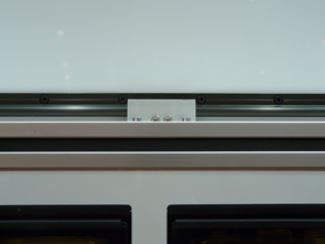
Interior and exterior kitchen
The extendable slide-out is not the only innovation on the Zoom. The new kitchen concept is equally ingenious. It is located aft and can be easily converted into an open-air kitchen by swinging open the large rear hatch. But the astute reader will think "hold on a minute - how will somebody operate the kitchen from the outside when it is located significantly above working height?"
This is quite true, Ross Design had to develop a movable kitchen block that travels vertically on two side-mounted lead screw axis. Anybody who wants to cook outside – "and camping is typically an outdoor event" as noted by Martin Ross, can simply move the kitchen down a few steps. Moreover, bikes and equipment can be loaded through the large rear hatch when the kitchen block is fully moved to the top.
Again, igus® lead screw drives of type drylin® SLW facilitate the required travel. This time however, two lead screw drives are operated in parallel on each side of the kitchen block that are synchronised by a control. In this case, Martin Ross relied on a proven drive kit from the automotive industry. After all, the two wipers blades on the windshield are also synchronized.
Looking for one solution turned into another
Some of these ideas involve the intelligent use of materials, others – and these are the key innovations of the Zoom – involve motion and variability. The fact that the designers relied on igus® components was ultimately a matter of chance. Martin Ross: "three years ago, we were looking for a slewing ring bearing for the swivel joint on a new camper kitchen. I found igus® on the Internet and contacted them."
Prompt and personal service included
The steps that followed were nothing short of astonishing to the prospect: "Instead of sending us several brochures, we were visited by the local field sales engineer from igus®, who came by to determine what our needs were and then provided us with the components. " Martin Ross greatly values this type of collaboration: "We like to work the same way – prompt, and without all the red tape. Because we work as a very small team, we also do not have the time to extensively address purchasing and administrative issues. The fact that the prices for igus® bearings and drive elements are published in the Internet is also very helpful. Ross also stated that, "the collaboration has become even faster since the igus® field sales engineer essentially lives right around the corner". This is the case in the US as well as there are over 100 field sales engineers across the country.
From Ross Design's point of view, not only the level of collaboration, but also the components themselves are a good match. Martin Ross: "For us, the igus® products are ideal, because they are cost-effective, corrosion-resistant, and maintenance-free. " This is not true for all plain bearings and linear drives on the market. Ross Design has also used energy chains from the igus® product range in other prototypes.

